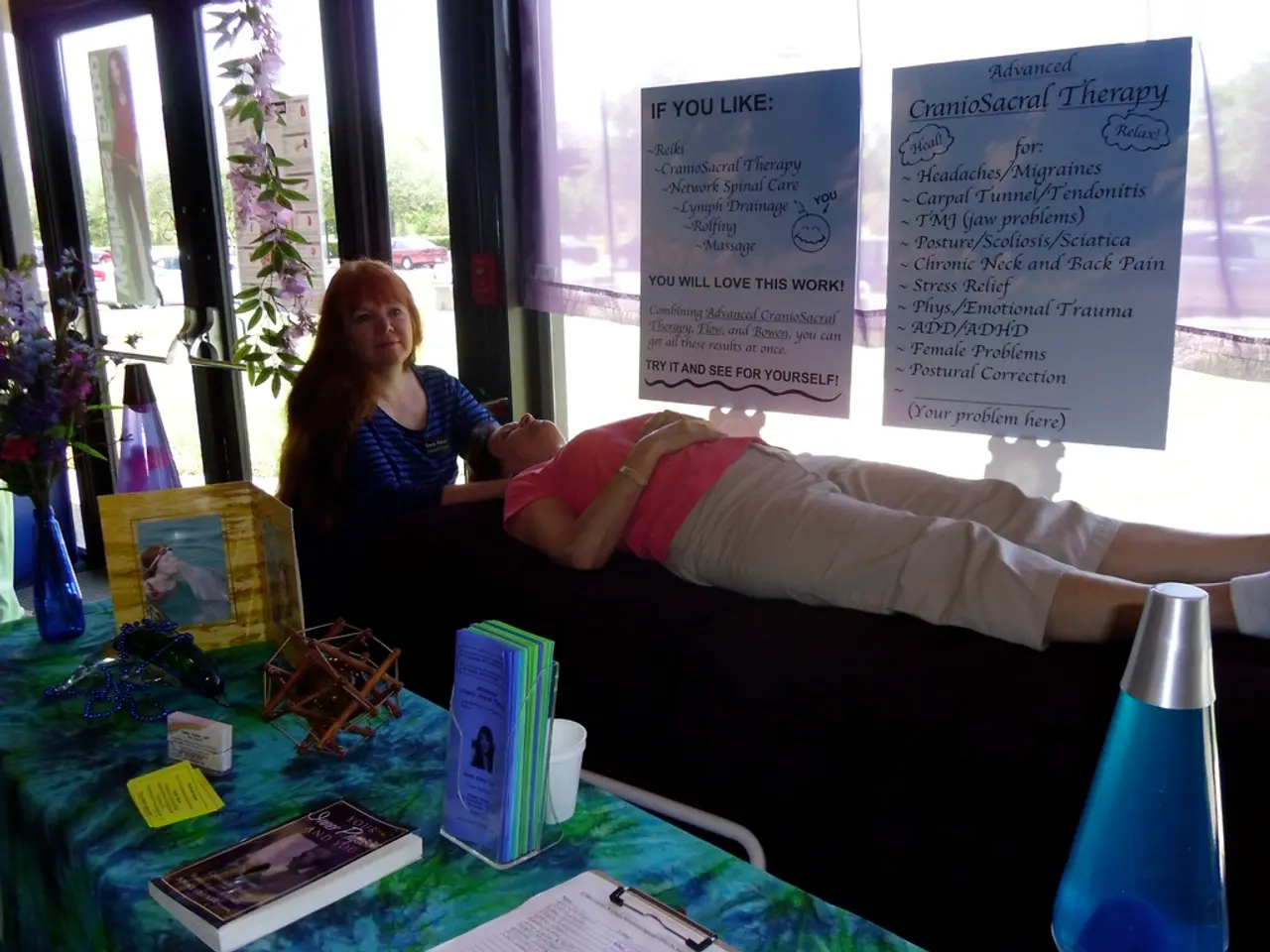Overcome Frozen Shoulder: Regain Mobility and Eradicate Discomfort
In a journey that often intersects with the natural changes of menopause, midlife women may find themselves grappling with the debilitating condition known as frozen shoulder. This musculoskeletal disorder, medically known as adhesive capsulitis, predominantly affects individuals aged 40 to 60, with women being disproportionately affected.
Frozen shoulder arises when the soft tissues surrounding the shoulder joint become inflamed, rigid, and restricted in movement, causing a gradual loss of range of motion. This condition can be a frustrating obstacle, but with the right approach, patience, and a comprehensive treatment plan, recovery is achievable.
The fastest way to treat frozen shoulder is through a multimodal approach, primarily based on customized physical therapy. This therapy is crucial, especially for menopausal women, as it improves shoulder mobility, reduces stiffness, and alleviates pain. Tailored exercises such as pendulum swings, cross-body arm stretches, towel stretches, and wall climbing (finger walk) help restore range of motion gradually. Physical therapy also addresses posture, sleep, and daily activity adaptations influenced by frozen shoulder and menopausal symptoms. Early initiation leads to better outcomes.
Over-the-counter NSAIDs or prescribed pain medications can reduce pain and inflammation, allowing better participation in physical therapy. Corticosteroid injections into the shoulder joint offer temporary but significant relief, enabling more comfortable movement and exercise.
Heat and cold therapy also play a crucial role in managing frozen shoulder. Applying heat can relax muscles and promote blood flow, reducing stiffness. Cold therapy (ice packs) helps decrease inflammation and swelling. Patients may find alternating between heat and cold beneficial.
Lifestyle modifications are equally important. Maintaining a balanced diet, regular low-impact exercise (like walking with natural arm swings), and good posture can help overall joint health and prevent symptom worsening. Avoiding repetitive or excessive shoulder movements and using proper body mechanics during daily activities are recommended.
Hormonal considerations are another aspect to consider. Since declining estrogen during menopause impacts collagen and joint elasticity, Hormone Replacement Therapy (HRT) may improve joint health and reduce frozen shoulder risk. However, HRT should be discussed carefully with healthcare professionals due to associated risks.
Minimally invasive procedures such as ultrasound-guided hydrodilatation (injecting fluid to expand the joint capsule and break adhesions) can improve mobility and reduce pain, usually combined with physical therapy. Platelet-rich plasma (PRP) injections are emerging treatments aimed at promoting tissue healing and pain relief, although more research is ongoing.
Surgical options like manipulation under anesthesia or arthroscopic release are considered only if conservative treatments fail, as surgery can increase inflammation and pain and is generally not recommended unless absolutely necessary.
Diagnosing frozen shoulder often requires a comprehensive physical examination, visual tests like X-rays or MRIs, and assessing the range of motion and shoulder function. Major health conditions such as diabetes, thyroid disorders, cardiovascular diseases, and certain neurological conditions have been linked to the development of frozen shoulder.
The journey to recover from frozen shoulder involves exhibiting patience, persistence, and initiative in self-care. Treatment such as physical therapy and controlled exercises significantly speeds up recovery and reduces pain. Exercises and activities prescribed by healthcare providers can significantly speed up the recovery process and restore full shoulder range of motion.
Maintaining steadfastness in rehabilitation efforts, celebrating small victories, and seeking support from family, friends, and healthcare professionals is essential during this challenging phase. Our comprehensive guide provides a roadmap for understanding the causes, symptoms, and stages of frozen shoulder, as well as various treatment options. Our mission is to empower women in midlife with knowledge and tools to address unique health challenges, including frozen shoulder. Preventive measures for frozen shoulder include incorporating daily stretching exercises, maintaining shoulder flexibility, living a healthy lifestyle, treating existing conditions, and seeking prompt help for shoulder injuries or surgeries. Frozen shoulder typically lasts from several months to 2 years, with early treatment helping to shorten its duration and severity. Recovery from frozen shoulder is achievable with the right approach, patience, and a comprehensive treatment plan.
- In the journey of menopause, women may experience chronic health conditions such as frozen shoulder, a condition primarily affecting ages 40 to 60, where the soft tissues surrounding the shoulder joint become rigid, causing a loss of range of motion.
- For efficient frozen shoulder treatment, a multimodal approach is advisable, including customized physical therapies, over-the-counter pain medications, and prescribed pain relievers to reduce pain and inflammation, allowing for better participation in exercises and speeding up recovery.
- Beyond medical treatments, lifestyle modifications are essential. Maintaining a balanced diet, regular exercise, good posture, and avoiding repetitive shoulder movements can help joint health and prevent symptom worsening.
- Hormonal considerations during menopause are critical, as declining estrogen affects collagen and joint elasticity. Hormone Replacement Therapy (HRT) may reduce frozen shoulder risk, but it's important to discuss this with healthcare professionals due to potential risks.
- Other emerging treatments for frozen shoulder include minimally invasive procedures like ultrasound-guided hydrodilatation and platelet-rich plasma (PRP) injections, but these should be considered only if conservative treatments are not effective, as they might increase inflammation and pain. A comprehensive approach to frozen shoulder treatment entails patience, persistence, self-care initiatives, and seeking support from healthcare professionals.




